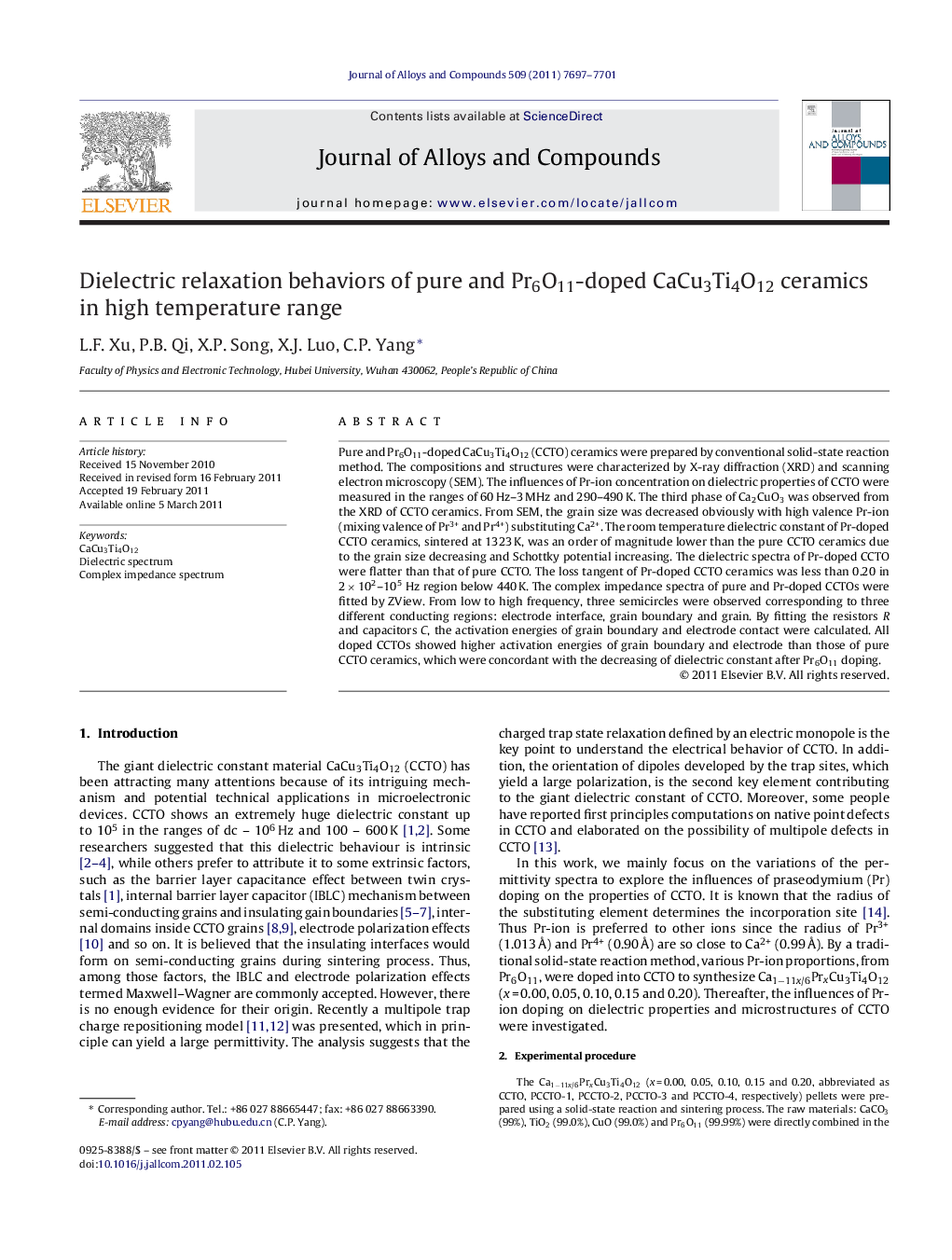| Article ID | Journal | Published Year | Pages | File Type |
|---|---|---|---|---|
| 1617303 | Journal of Alloys and Compounds | 2011 | 5 Pages |
Pure and Pr6O11-doped CaCu3Ti4O12 (CCTO) ceramics were prepared by conventional solid-state reaction method. The compositions and structures were characterized by X-ray diffraction (XRD) and scanning electron microscopy (SEM). The influences of Pr-ion concentration on dielectric properties of CCTO were measured in the ranges of 60 Hz–3 MHz and 290–490 K. The third phase of Ca2CuO3 was observed from the XRD of CCTO ceramics. From SEM, the grain size was decreased obviously with high valence Pr-ion (mixing valence of Pr3+ and Pr4+) substituting Ca2+. The room temperature dielectric constant of Pr-doped CCTO ceramics, sintered at 1323 K, was an order of magnitude lower than the pure CCTO ceramics due to the grain size decreasing and Schottky potential increasing. The dielectric spectra of Pr-doped CCTO were flatter than that of pure CCTO. The loss tangent of Pr-doped CCTO ceramics was less than 0.20 in 2 × 102–105 Hz region below 440 K. The complex impedance spectra of pure and Pr-doped CCTOs were fitted by ZView. From low to high frequency, three semicircles were observed corresponding to three different conducting regions: electrode interface, grain boundary and grain. By fitting the resistors R and capacitors C, the activation energies of grain boundary and electrode contact were calculated. All doped CCTOs showed higher activation energies of grain boundary and electrode than those of pure CCTO ceramics, which were concordant with the decreasing of dielectric constant after Pr6O11 doping.
► The first time use Pr-ion substituting Ca2+ site of CCTO ceramics. ► Find out the origin of huge dielectric constant by different ways, like dielectric spectra and complex impedance spectra by ZView software fitting. ► Activation energies of grain boundary and electrode of pure and Pr doped CCTO ceramics were calculated and compared, which were found to be related to its dielectric constant.
